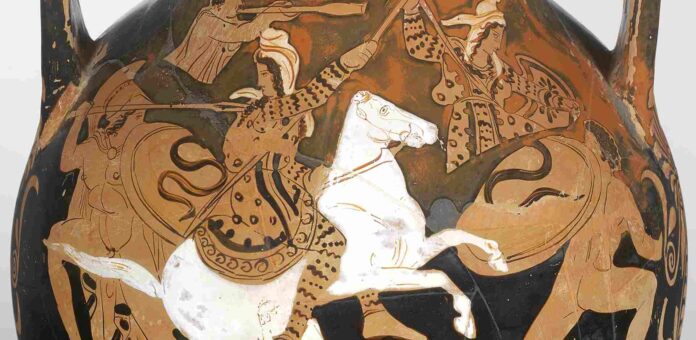Monstrous like Medusa, beautiful like Aphrodite, faithful like Penelope – many women from ancient mythology are known primarily as stereotypes of traditional female roles. Inspired by a surge in new readings of these myths, the Antikensammlung (Collection of Classical Antiquities) is taking a fresh look at the goddesses and heroines.
Ancient mythology continues to fascinate: Medusa, Kirke, Medea and Persephone – the retelling of the stories of women from mythology is currently popular in the form of novels for adolescents and adults. The predominately female authors grant their mythical woman characters a voice of their own. This leads to a change in perspective on stories that until now have largely been handed down by authors from the male-dominated society of antiquity.
Focusing on Twelve Goddesses and Heroines
Myths can be adapted to the social environment, meaning that our interpretation of ancient objects always reflects our personal perspective. The special exhibition therefore deliberately approaches its protagonists from two perspectives: the ancient and the modern. Twelve female figures take centre stage, from the most famous goddesses, such as Aphrodite, to lesser-known heroines, such as Atalante. Life-size statues, detailed vase paintings and small pieces of jewellery reveal how these women were portrayed in antiquity and what stories their images have to tell.
Role Models and Counter-Images
The images and myths are viewed against the background of the ancient world. They arose in a fundamentally binary and male-dominated society with corresponding role models. For women, this often entailed subordination. However, the mythological female figures adhere only partially to these norms.
The exhibition explores the categorisation of antiquity’s famous female figures in three thematic areas. Which ones are considered role models and why? Some behave as expected and epitomise fidelity, modesty and fertility. But three of the most revered – Athena, Aphrodite and Artemis – transgress, each in their own way, certain normative boundaries and are apparently not subject to them. What does it mean when the naked “goddess of love” Aphrodite bears a sword? If, however, the women stray too far from female role norms, they become negative counter-images of social behaviour. Medusa is a well-known example. But was she really only the “monster”?
Modern Perspectives
In addition to ancient objects, the exhibition also presents historical and contemporary perspectives. Medusa, for example, was transformed as of the 1980s from a man-killing monster into a feminist role model. Goddesses and Consorts provides a contemporary look at a number of women in myth. The ancient images are multifaceted and still highly topical.
Accompanying Publication
A publication accompanying the exhibition is being published by Kadmos Verlag.
A special exhibition of the Antikensammlung – Staatliche Museen zu Berlin
Source : Museen zu Berlin












